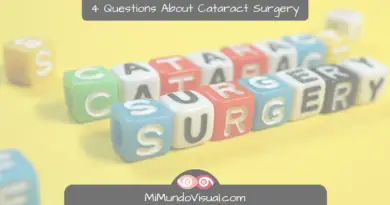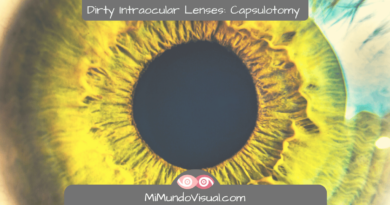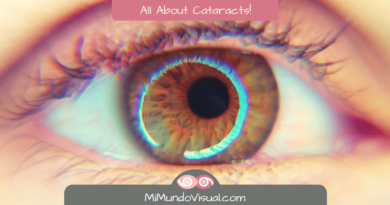7 Questions About The Crystalline Lens
Table Of Contents
We may have heard the name crystalline lens and know it is a part of our eye. But do we really know what the crystalline lens is?
In the following article, we intend to study the crystalline lens with a series of 7 questions. We will answer these to allow you to better understand more about the eyes and the wonderful universe we can observe.
#1 What Is The Crystalline Lens?
The crystalline lens is a natural lens responsible for focusing light into an image on the retina. Its shape resembles a biconvex lens (similar to a flattened sphere).
It is located behind the iris (the colored part of the eye responsible for regulating the amount of light entering the eye). It is suspended by ligaments or fibers, the Zonules of Zinn (a ring of fibrous tissue that attaches to the lens and connects it to the ciliary body).
Behind the lens is the vitreous body or vitreous humor (a gel that keeps the walls of the eye together and fills the space between the retina and the eyeball).
The crystalline lens is flexible, transparent (colorless), and avascular, i.e., it has no blood vessels or nerves. It is made up of 65% water and 35% protein.
The crystalline lens is elastic, and this characteristic allows it to flex to change its shape. This fact of changing its shape allows the lens to change its power to focus on objects at a close distance.
#2 How is the Crystalline lens formed?
To know how the lens is formed, first, we will learn about the parts that compose it.
The lens is internally divided into two zones: the nucleus and the cortex. And it is composed of 3 main parts: the capsule, the epithelium, and the fibers.
The outer capsule, or crystalloid, is a transparent and elastic capsule that covers the lens, connected to the ciliary muscle, thanks to the zonular fibers (Zinn’s zonule).
The epithelium is located between the capsule and the fibers. The epithelium cells regulate many of the lens’s internal functions and serve as progenitors of the new lens fibers. It is the only lens tissue capable of regenerating itself.
The lens fibers, or Zinn’s Zonules, are thin, transparent, thin cells arranged in layers, like an onion along the lens. This way, new lens fibers created from the epithelium are added to the outer cortex.
After birth, the lens continues to grow, and lens fibers continue to be added to the outer layer, surrounding the previous fibers.
#3 What Makes the Crystalline Lens Transparent?
The lens comprises these elongated fibers, composed of proteins known as crystallins that make up more than 90% of the lens protein and provide transparency to this structure.
In addition, the fact that the lens has no light-scattering organelles in the nucleus and other parts of the lens may be an important factor in maintaining lens transparency.
When we are born, the lens has these elongated cells that look like fibers. These are completely transparent due to their highly ordered arrangement. Together with other proteins and chemical processes, this keeps the lens transparent.
As the years go by, as we have seen in the previous point, additional fibers are added to envelop the inner part of the lens, the nucleus.
When the lens is transparent, it allows light to pass through the retina to form a sharp, clear image. However, if the lens is cloudy due to a cataract, the image formed on the retina will be blurred.
#4 What is the function of the Crystalline lens?
The function of the lens is to focus light rays to form a good image of objects, even if they are at different distances.
The lens changes its curvature by bulging or elongating in order to focus different objects on the retina.
The lens will be misaligned if the object is far away from us. As the object gets closer, the lens will bulge or accommodate to be able to focus the object on the retina.
How is this achieved?
As the object gets closer, the brain will see it more blurred, sending information to the ciliary muscle (the muscle surrounding the lens) to start up.
When the ciliary muscle is relaxed, the lens is out of adjustment and relaxed, allowing us to see distant objects clearly.
However, as the object gets closer, the ciliary muscle kicks in and contracts so we can see it sharply as it approaches.
#5 What Is Crystalline Lens Accommodation?
The lens, along with the cornea, is responsible for refracting light so that it is focused on the retina.
By changing its shape, the crystalline lens allows us to change the eye’s focal distance to focus on objects at different distances.
In this way, it gives us a sharp image of the object. This adjustment is known as lens accommodation.
The accommodation of the crystalline lens could be compared to the focusing of a camera in terms of the movement of its lenses.
As we have just learned in the previous point, the ciliary muscle remains relaxed when we have a distant or far away vision.
On the other hand, when focusing on an object, the ciliary muscle contracts, and through the contraction of the ciliary muscle, the curvature of the lens and its thickness increase.
This causes the lens to become more spherical in shape, and lens accommodation occurs.
The function of the lens, which is the ability to accommodate, decreases over the years due to hardening. This is known as presbyopia.
At birth, the lens is softer and more spherical, and it hardens as we age.
Presbyopia or eyestrain occurs when the hardening of the lens causes a loss of elasticity. In addition, the lens grows over the years, which also causes it to lose its ability to accommodate.
This means that the point of near focus gets farther and farther away, so we lose near vision.
#6 What is the image seen through the Crystalline lens?
As we have already mentioned, the crystalline lens has the function of accommodating, that is, focusing the image just as the zoom of a camera would do.
The lens becomes flatter or more convex depending on the distance of the object we are looking at so that we can see the object sharply and clearly on the retina.
Over the years, the crystalline lens ages and grows, which causes:
This accommodation capacity decreases, which is known as presbyopia. Or, the crystalline lens’s transparency becomes cloudy and more opaque. In this case, we would be talking about cataracts.
On the other hand, if there is a malfunction in the image transmission process to the retina, we have refractive errors: myopia, hyperopia, and astigmatism.
#7 How to clean the crystalline lens of the eye?
When the transparent crystalline lens becomes opaque, it blocks the entry of light, making it impossible to see clearly. This is known as cataracts.
There are 3 types of cataracts: congenital, acquired, or infantile.
The treatment for cleaning the crystalline lens of the eye is cataract surgery. The ophthalmologist removes the eye’s lens and places an artificial lens called an intraocular lens.
The intraocular lens will do the work of the lens of the eye. There are times when the lens has to be cleaned because the vision becomes blurred again as if the eye has cataracts again.
This happens because when the lens is removed from the eye, the posterior lens capsule is left inside the eye so that the artificial lens can be attached.
Sometimes, this capsule becomes opaque and can cause blurred vision. To treat this problem, the capsule is cleaned with a laser.
And to finish up, we would like to share a video we have found that shows us what the lens is and what we have learned from these previous questions.
This way, we can get a better visual idea of what we have been mentioning and expand and test our knowledge regarding the lens.




